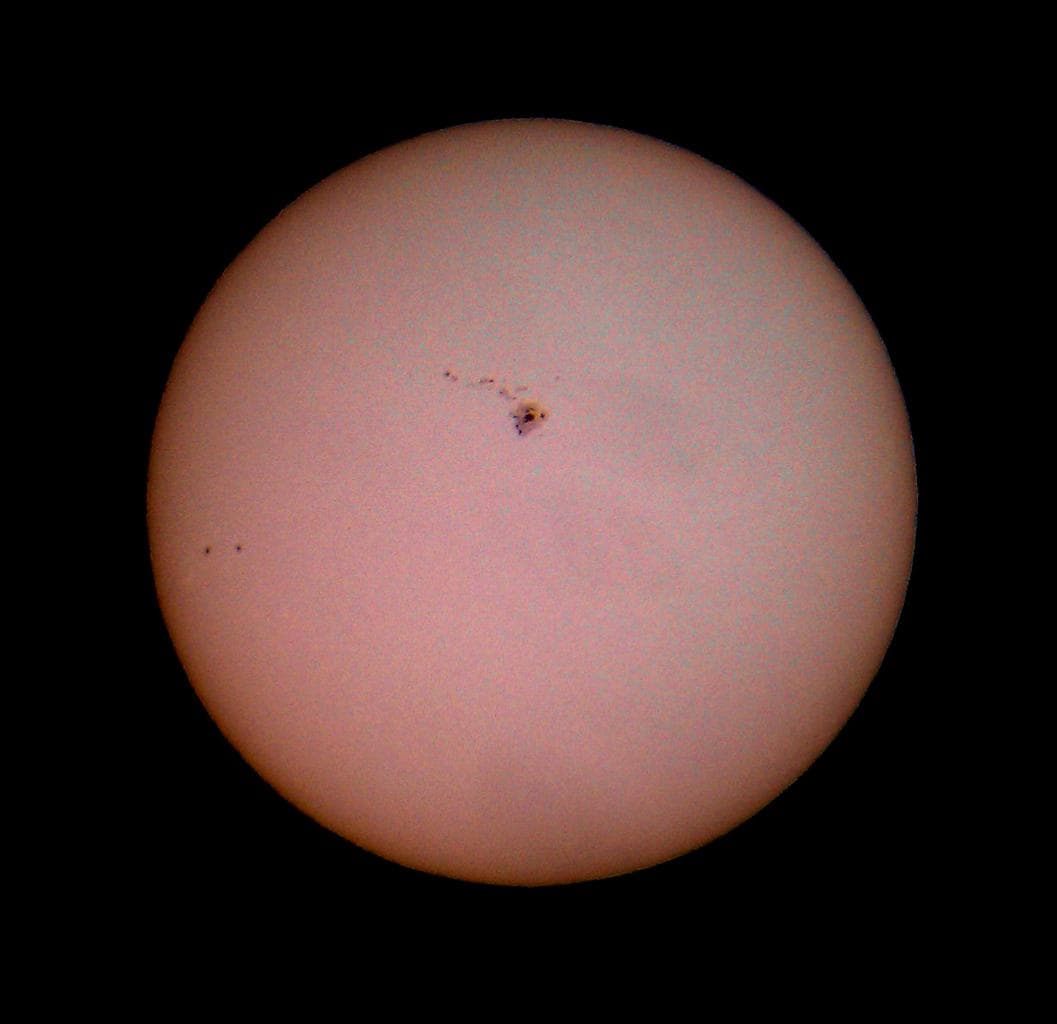
with David Fuller

Early astro - errr... solarphotography?
The Sun may seem angry lately, but it's not really
- it's just going through it's usual cycle of sunspots. But given how incredibly quiet it was up until just recently - the sunspots over the past few months have seemed downright incredible. I have been working harder to not only get some better equipment to view the Sun - a couple larger solar filters for my existing scopes - but also learning how to take better pictures of it. Well... I'm doing what I would term "okay" - mostly because all I am doing is holding my cell phone over the eyepiece and snapping a WHOLE LOT of pictures, then comb through them on the computer to see which one or two captured the most detail or have the best contrast. (This is similar to what I have been doing with my Saturn pictures.)

So in the last week or so, this new sunspot group - AR1457, I believe - has rotated into view on the Sun's surface. Apparently it is also belching out some stuff into space - though the most it is likely to do to us is maybe - MAYBE - create some better aurora (which I would LOVE to see, but still haven't yet). I got a few pictures of this group the other day, but they did not turn out as well as I'd hoped. Today, I grabbed my 90mm f/10 Orion refractor, the Meade solar filter, on a Celestron mount (how's that for making sure I "spread the wealth around"?), and snapped some pictures.
Oh yeah. Much better.
It doesn't hurt that the Sun -being nearly the same size in angular diameter as the Moon - is a big object. And even small sunspots can have some decent detail in them, but when LARGE sunspots are there, then it's like striking gold! For the wide field picture of the entire Sun, that was using a 32mm Plossl in the scope. The close up was with a 12.5mm AstroTech planetary eyepiece with long eye relief.

My technique is to use my finger to brace the camera over the eyepiece by placing said finger between the phone and eyepiece itself - just propping it up there. The phone initially thinks it's looking at darkness, so when I do finally manage to locate the Sun with the camera (this takes a bit of patience, and slow "back and forth" with the phone), the exposure gets 'blown out" for a few seconds until it can compensate for the brighter image (mind you, this IS still using a visual solar filter - I am NOT doing eyepiece projection!). Then, I carefully control my breathing - sometimes I feel like a sniper - taking my shots by tapping the phone lightly to take the picture when the screen has a sharp image that isn't vibrating too much due to my finger being between the scope/camera. Again, I take quite a few pictures - usually a dozen or more - and take the best ones from those.
I plan on getting one of the Orion cameras - not even a fancy one, I think it's $100 or something - so I can get my hands off the scope to take better shots. But then I won't get the full disk either, so I'll still continue to do this sometimes. In any case, it's a lot of fun, and doesn't require the same time or set up of the fancier astrophotography done on DSO's at night.
Is it great astrophotography? No. Acceptable? I'd say so. But more importantly, this is the kind of thing most ANYONE can do. A small telescope with a proper solar filter and a cell phone can get this kind of images? I'd have NEVER though that possible 15 years ago. It's truly stunning how little equipment is required now to get truly amazing images of our closest star.
And that's pretty cool.
